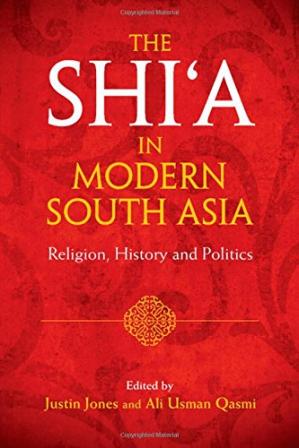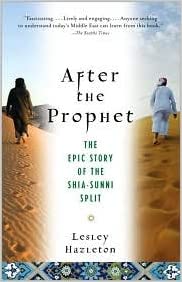An Analysis of the 1988 Shi’a Massacre in Gilgit: A Study of Sectarian Conflict and its Socio-Political Implications”
Abstract:
The 1988 Shia Massacre in Gilgit City, Pakistan, stands as a harrowing example of state-sponsored violence against religious minorities during General Zia-ul-Haq’s regime. This event involved the brutal suppression of a Shia revolt, orchestrated by Zia-ul-Haq’s government, which resulted in the deaths of hundreds of Shia civilians. The regime enlisted a coalition of Deobandi Takfiri Sunni militants from various regions, including Afghanistan and Pakistan, to quell the uprising. Led by Osama bin Laden, these militants unleashed a wave of violence, including mass killings, rapes, and destruction of property, particularly in villages along the Karakoram Highway. The exact casualty figures remain disputed, but estimates range from 150 to 800 Shia deaths, with numerous others injured.
Key Points:
1. Background: The 1988 Shia Massacre in Gilgit City occurred during General Zia-ul-Haq’s oppressive regime in Pakistan. Zia-ul-Haq pursued an Islamization program that involved persecuting religious minorities.
2. Militant Coalition: Zia-ul-Haq’s regime assembled a coalition of militants, including Deobandi Takfiri Sunni jihadists from Pakistan’s tribal areas, Afghan fighters, and local Sunni tribesmen, to suppress the Shia revolt in Gilgit.
3. Role of Osama bin Laden:** Osama bin Laden, who had previously been hired by Hamid Gul for similar purposes, led this militant coalition to quell the Shia uprising.
4. Violence and Atrocities: The militants invaded Gilgit along the Karakoram Highway, leading to widespread violence, destruction of crops and homes, lynching, and burning of people in villages. Shia women were also subjected to mass rapes by the militants and local tribesmen.
5. Casualty Figures: The exact number of casualties remains a subject of dispute. Estimates suggest that between 150 to 800 Shia individuals were killed, with hundreds more injured.
6. Devastation: Several villages, including Jalalabad, Batkore, Sakwar, Bargo, Sherqilla, Shikyote, Bunji, Juglote, Pari Bangla, and Minawar, suffered extensive destruction, including the burning of houses, Quranic texts, and mosques.
7. Ongoing Quest for Justice:** Even after more than three decades, the Shia community in Gilgit-Baltistan is still seeking justice and answers regarding the violence they endured during the 1988 massacre.
This tragic event underscores the grim consequences of religious persecution and state-sponsored violence against minorities in the name of political control and religious ideology. It serves as a somber reminder of the need for justice, accountability, and the protection of religious freedom in society.
Conclusion: The 1988 Shia Massacre in Gilgit City is a stark and haunting reminder of the brutal consequences of state-sponsored violence against religious minorities in pursuit of political agendas. General Zia-ul-Haq’s regime, in its relentless quest for Islamization, orchestrated a violent crackdown on Shia civilians who dared to revolt against their oppressive rule.
The involvement of a coalition of militants, led by none other than Osama bin Laden, speaks volumes about the extent to which the Pakistani state was willing to go to suppress dissent. This coalition unleashed a wave of terror that resulted in the deaths of hundreds of Shia individuals, with many more enduring injuries, rapes, and the destruction of their homes and places of worship.
The ongoing quest for justice by the Shia community in Gilgit-Baltistan serves as a testament to their resilience and determination to find answers and accountability for the horrors they endured. It also highlights the broader struggle for religious freedom and the protection of minority rights in Pakistan and around the world.
In conclusion, the 1988 Gilgit Massacre stands as a dark chapter in Pakistan’s history, underscoring the need for societies and governments to uphold the principles of justice, tolerance, and respect for religious diversity. It is a solemn reminder that the pursuit of political agendas at the expense of human lives and basic human rights should never be tolerated.
The 1988 massacre of the Shi’a community in Gilgit City stands as a stark testament to the brutal consequences of state-sponsored violence against religious minorities in Pakistan, specifically underscoring the broader tragedy of the Shia genocide within the country. This dark episode unfolded in the Gilgit District and was precipitated by the revolt of Shia civilians against the oppressive regime of General Zia-ul-Haq. His administration was characterized by its adherence to a Deobandi Takfiri Sunni Islamist ideology and the relentless persecution of religious minorities, with the Shia community bearing a significant brunt of this systemic violence as part of its Islamization agenda.
The Perpetrators and their Machinations:
The Zia-ul-Haq military regime orchestrated this massacre by deploying a contingent of militants hailing from the North-West Frontier Province and the Federally Administered Tribal Areas of Pakistan. These militants were further bolstered by recruits from neighboring Afghanistan and local Deobandi Takfirin Sunni tribesmen from Chilas. Their mission was to, in their own words, “teach a lesson” to the Shi’a population, resulting in the tragic loss of approximately 800 innocent Shi’a lives.
Operational Dynamics:
Notably, General Zia-ul-Haq, rather than deploying the Pakistan Army directly, chose an alternative, more insidious approach. He enlisted a tribal band of Pashtun and Sunni irregulars, many affiliated with the radical Sipah-e-Sahaba Pakistan (SSP), an organization known for its extremist stance. This force was led by none other than the notorious mercenary, Osama bin Laden, who had previously been engaged by Hamid Gul for similar nefarious purposes four years prior.
The Perceived ‘Shia Revolt’:
The Pakistani establishment portrayed the revolt by Shi’a civilians in Gilgit as an Iranian-sponsored insurgency. In response, General Zia-ul-Haq entrusted the Special Service Group (SSG), under the command of Brigadier Pervez Musharraf, with the task of quelling the rebellion. Musharraf, in turn, transported a substantial number of Wahabi Pakhtoon tribesmen from the NWFP and Afghanistan to Gilgit, with the explicit goal of subduing the Shi’a population. Tragically, these tribesmen unleashed a wave of violence, resulting in the massacre of hundreds of Shi’a individuals.
The Horrors Unleashed:
May 1988 marked a grim turning point in the history of Gilgit, as simmering political rivalries and sectarian tensions erupted into a full-scale carnage. Thousands of armed tribesmen from outside Gilgit District invaded the city along the Karakoram Highway, leaving a trail of destruction in their wake. They laid waste to crops and homes, engaging in acts of lynching and immolation in the villages surrounding Gilgit town. The resultant death toll numbered in the hundreds, and the brutality of the invading hordes left an indelible scar on the peaceful valleys.
Unspeakable Atrocities:
The massacre of Shi’a Muslims in Gilgit District was characterized by horrific acts perpetrated by a thousand-strong force of Deobandi Takfiri Sunni jihadists, masterminded by Osama bin Laden and supported by the Pakistani military. Disturbingly, Shi’a women living in Gilgit District also fell victim to mass rape, perpetrated by local Sunni tribesmen and the bin Laden-led militants.
Disputed Casualty Figures:
The exact count of casualties in the 1988 Gilgit massacre remains a subject of contention. Some sources cite a death toll ranging from 150 to 400, with hundreds more sustaining injuries. Conversely, unofficial reports assert that the number of Shi’a victims may have reached as high as 700 to 800.
Data on the Long-lasting Impact:
The legacy of the 1988 Shi’a Massacre in Gilgit City endures, with lasting consequences for the region. Subsequent investigations and reports have shed light on the enduring trauma suffered by the survivors, many of whom continue to seek justice and accountability. Furthermore, the event has left a profound mark on the demographics and social fabric of Gilgit, with displaced Shi’a families forced to seek refuge in Shi’a-dominated areas for their safety.
Conclusion:
The 1988 Shi’a Massacre in Gilgit City serves as a chilling reminder of the grave consequences of religious and sectarian animosities, exacerbated by state-sponsored violence. The echoes of this tragedy still reverberate through the region, demanding justice for the victims and a reckoning with the painful legacy of this dark chapter in Gilgit’s history.
References:
Levy, A., & Scott-Clark, C. (2010). Deception: Pakistan, the United States, and the Secret Trade in Nuclear Weapons, Chapter 13.
Bansal, A. (2007). In Pursuit of Forced Assimilation, pp. 61–62
Raman, B. (2003). “The Karachi Attack: The Kashmir Link.”
The Herald Monthly Karachi, Issue April 1990.
International Organizations and The Rise of ISIL: Global Responses to Human Security Threats. (2016). Routledge, pp. 37–38.
Murphy, E. (2013). The Making of Terrorism in Pakistan: Historical and Social Roots of Extremism. Routledge, p. 134.
Ambreen Agha, “Gilgit-Baltistan: Murder most Foul,” South Asia Intelligence Review, via New Age Islam, 5 March 2012.
Levy, A., & Scott-Clark, C. (2010), Chapter 13.
https://www.facebook.com/GBiansJalalabad/posts//1988-incident-shia-massacre-in-gilgit-baltistan22d-may-1988-a-black-day-in-the-h/1611273109067275/






